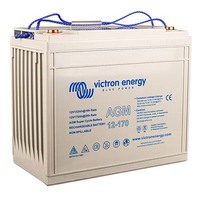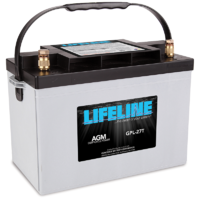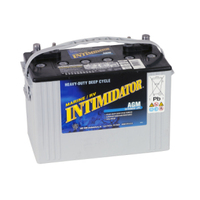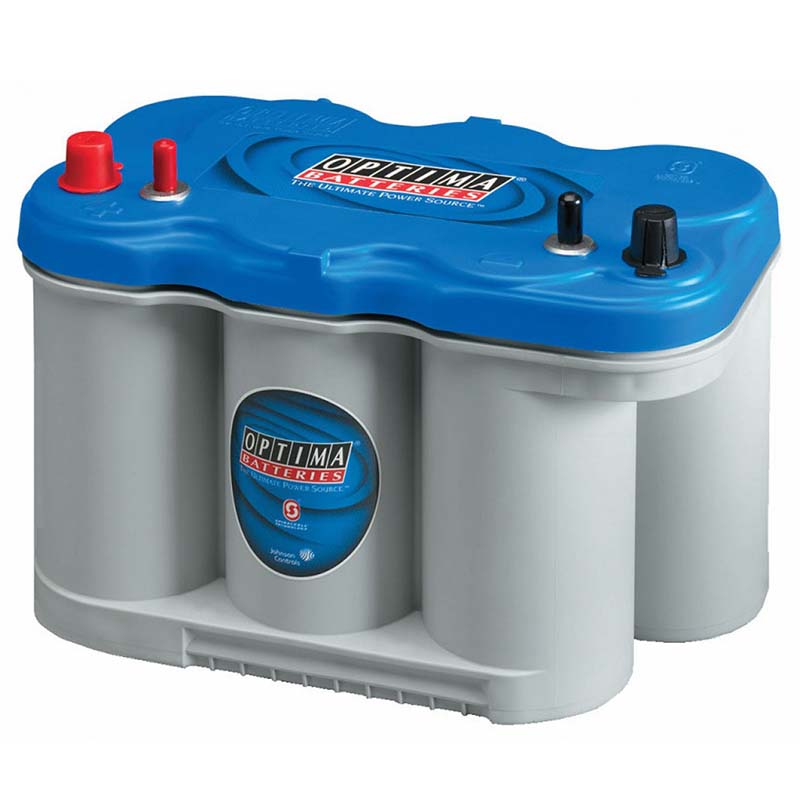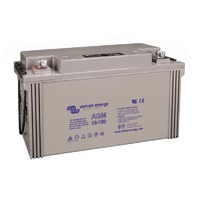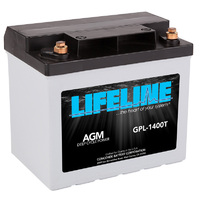AGM Batteries
The innovative Victron Super Cycle AGM battery recommended for regular deep cycle use in Marine and RV applications.
- Can withstand occasional 100% DOD cycles
- Suitable for frequent 60% to 80% DOD cycles
- Low internal resistance for efficient operation
The venerable Lifeline range of marine and RV AGM batteries for engine starting and deep cycle house battery use with capacities from 24 to 255 Ah.
The Deka range of AGM deep cycle batteries with capacities from 55 to 245 amp hour are made in the United States.
The Optima BlueTop range of heavy-duty deep cycle batteries for marine and RV applications with capacities from 50 to 75 Ah and 750 to 900 CCA.
The Victron range of AGM batteries for deep cycle house battery use with capacities from 66 to 220 Ah provide a cost effective alternate power source.
Deep Cycle AGM Batteries
Outback Marine have been selling AGM batteries for marine and land mobile systems for over 12 years. For long service life and applications performance, it's important to select the right battery for the job. Lifeline batteries are renowned for their superior performance and solid 5 year pro-rata warranty to back it up. And now we are offering the Deka line of AGM batteries manufactured by East Penn in the United States. These also are a proven battery with a 1 year replacement warranty - but priced to compete with the cheaper imports.
Review of AGM, or Absorbed Glass Mat Batteries
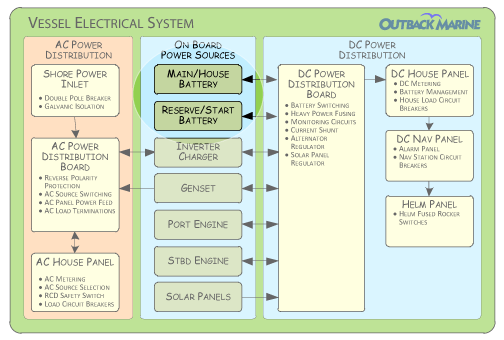 Virtually all electrical and electronic systems on a boat are dependent on the battery system. On a vessel that has live-aboard capability, most loads connect to the house battery bank. In that way a separate start battery can be kept fully charged while the house battery provides the power to support living aboard.
Virtually all electrical and electronic systems on a boat are dependent on the battery system. On a vessel that has live-aboard capability, most loads connect to the house battery bank. In that way a separate start battery can be kept fully charged while the house battery provides the power to support living aboard.
The house battery is called upon to produce power for long periods between charges and then to accept power at a fast rate when it comes time to charge. It is therefrore extremely importand to select the right type of battery technology and to properly engineer the charging system.
We have found over the last 12 years, that AGM or Absorbed Glass Mat batteries, have provided the type of service required. They use a very fine fiber Boron-Silicate glass mat. These type of batteries have all the advantages of gel-based batteries, but can take much more abuse. These are also called "starved electrolyte", as the mat is about 95% saturated rather than fully soaked. That also means that they will not leak acid even if broken.
AGM batteries have several advantages over both gelled and flooded, at about the same cost as gelled:
Since all the electrolyte (acid) is contained in the glass mats, they cannot spill, even if broken. This also means that since they are non-hazardous, the shipping costs are lower. In addition, since there is no liquid to freeze and expand, they are practically immune from freezing damage.
Nearly all AGM batteries are "recombinant", that is, the Oxygen and Hydrogen recombine INSIDE the battery. These use gas phase transfer of oxygen to the negative plates to recombine them back into water while charging and prevent the loss of water through electrolysis. The recombining is typically 99+% efficient, so almost no water is lost.
The charging voltages are the same as for any standard battery - no need for any special adjustments or problems with incompatible chargers or charge controls. And, since the internal resistance is extremely low, there is almost no heating of the battery even under heavy charge and discharge currents. The Lifeline and Deka that we sell have no charge current limits, provided that voltage and temperature is kept within specification.
AGM's have a very low self-discharge - from 1% to 3% per month is usual. This means that they can sit in storage for much longer periods without charging than standard batteries. They can be almost fully recharged (95% or better) even after 30 days of being totally discharged.
AGM's do not have any liquid to spill, and even under severe overcharge conditions hydrogen emission is far below the 4% max specified for aircraft and enclosed spaces. The plates in AGM's are tightly packed and rigidly mounted, and will withstand shock and vibration better than any standard battery.
Even with all the advantages listed above, there is still a place for the standard flooded deep cycle battery. AGM's will cost 2 to 3 times as much as flooded batteries of the same capacity. In many installations, where the batteries are set in an area where you don't have to worry about fumes or leakage, a standard or industrial deep cycle is a better economic choice. AGM batteries' main advantages are no maintenance, completely sealed against fumes, Hydrogen, or leakage, non-spilling even if they are broken, and they can survive most freezes.

